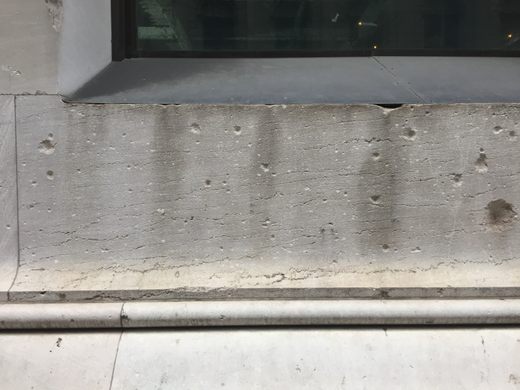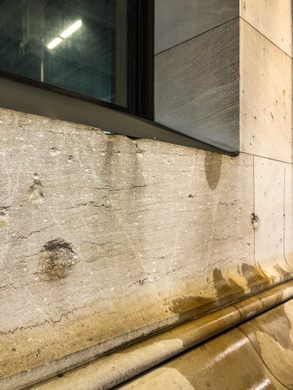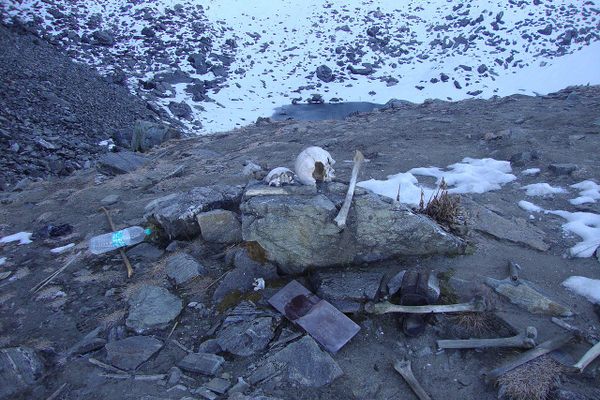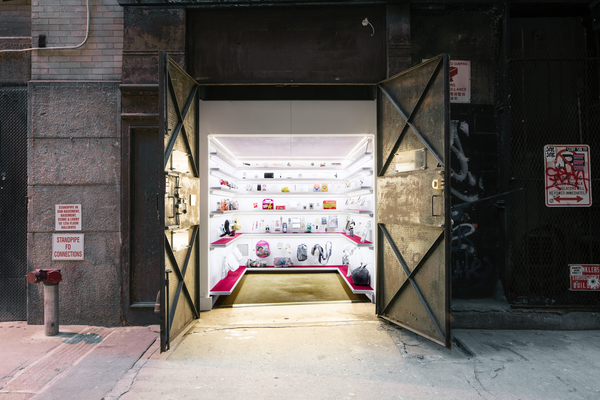The wall of 23 Wall Street is deeply scarred with craters.
Ranging in size from small, missing chunks of limestone to deeper baseball-sized pits, the scars are all that remain of an oft forgotten terrorist attack in the early 20th century.
On September 16, 1920, a horse-drawn carriage carrying a large bomb was driven to the intersection of Wall Street and Broad Street. When detonated, the bomb sent fragments hurtling into the surrounding buildings, killing 39 people and badly wounding many others. The amount of destruction totaled $2 million, most of it on the corner of the two streets.
At the time, the corner building on Wall Street was the headquarters of J.P. Morgan, and was a well-known landmark in the city. Considering the circumstances and target, police surmised the bombing was an act of terrorism, and a possible attempt on J.P. Morgan’s life.
Although some evidence was found, the case was never resolved and was dropped 20 years after the bombing. It is believed that the attack was carried out by Italian anarchists, in particular by one Mario Buda, an associate of famous anarchists Sacco and Vanzetti. Until September 11, 2001, the Wall Street bombing was the deadliest terrorist attack in the history of New York City.
The fragments in the old Morgan building have never been repaired, and stand as a reminder of the explosion that occurred nearly a century ago.
Know Before You Go
Accessible by subway at the Wall Street stop on the 2, 3, 4, and 5 trains and the Broad Street stop on the J and Z trains.

























Follow us on Twitter to get the latest on the world's hidden wonders.
Like us on Facebook to get the latest on the world's hidden wonders.
Follow us on Twitter Like us on Facebook